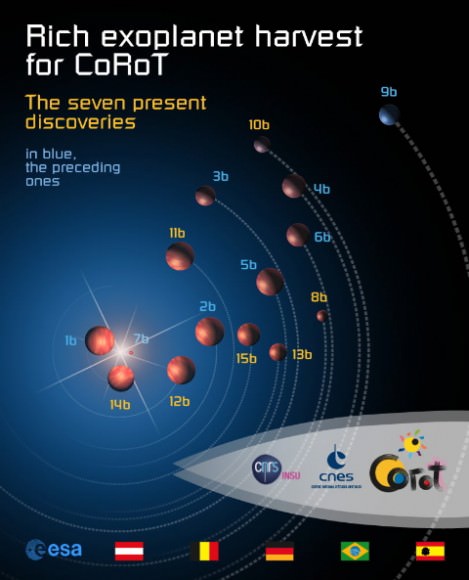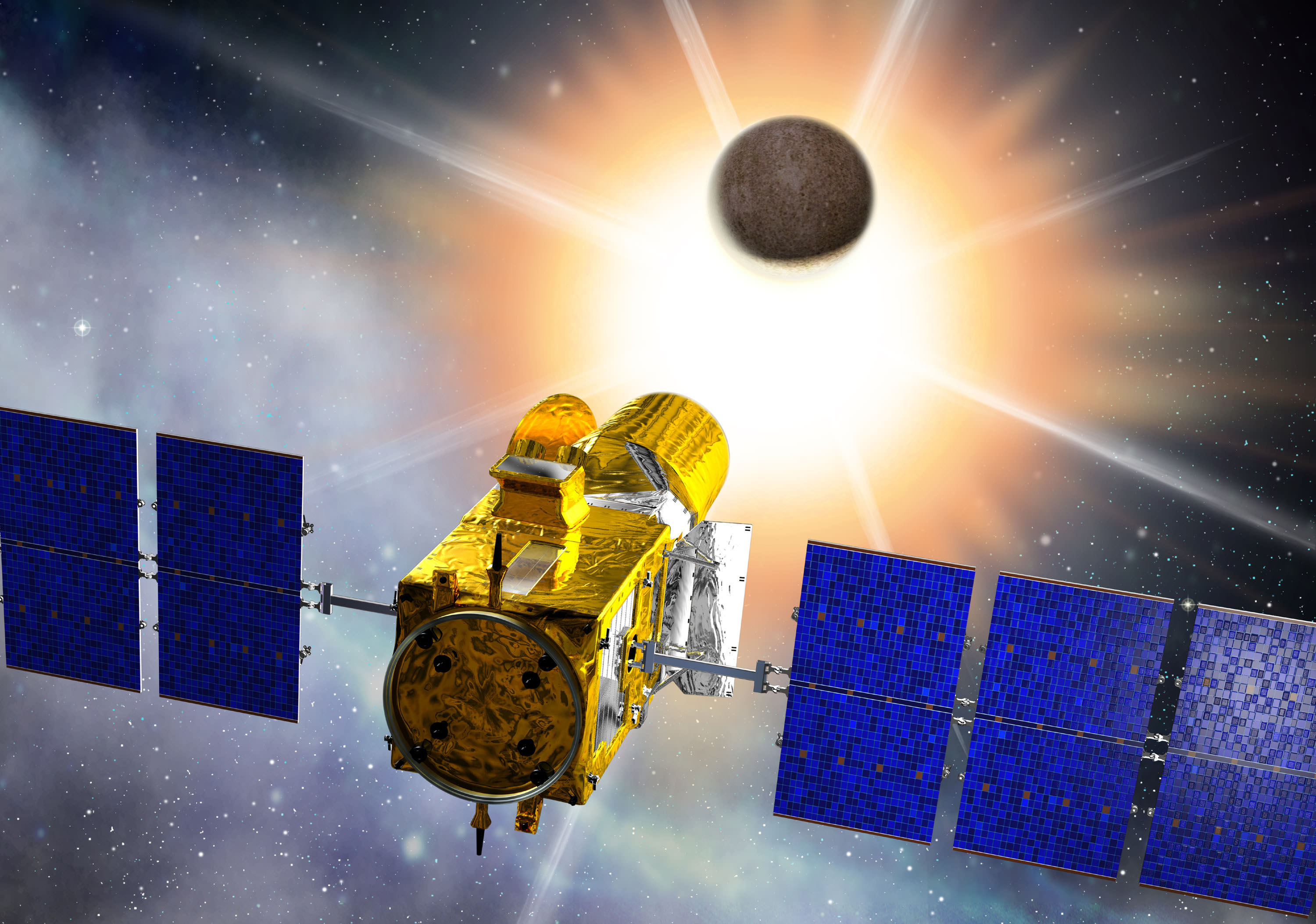More bad news on the exoplanet-hunting front: While the final fate of the Kepler spacecraft remains unknown, the CoRoT (Convection, Rotation and Planetary Transits) satellite has now been officially shut down. CoRoT suffered a computer failure on November, 2, 2012 and although the spacecraft is capable of receiving navigational commands, the French Space Agency CNES reports it can no longer retrieve data from its 30-centimeter telescope. After a valiant effort to try and restore the computer, CNES announced this week that the spacecraft has been retired. CoRoT’s journey will come to a fiery end as it will be deorbited and it will burn up on re-entry in Earth’s atmosphere.
While it’s always hard to see the end of successful mission, we can’t be too sad about CoRoT, however. The mission lasted twice as long as expected and it gathered a remarkable haul of exoplanets. CoRoT looked for planetary transits — a dimming in brightness of the host star as a planet crossed in front. CoRoT was the first mission to find a planet using the transit method.
In all, CoRoT has spotted 32 confirmed planets and at least 100 more are awaiting confirmation. The mission also allowed astronomers to study the stellar physics and the interior of stars.
This is not the first computer failure for the mission. CoRoT launched in December of 2006, and in 2009 the main computer failed and has since been running on the backup computer. When the second computer failed in November, engineering teams have tried to reboot both computers, with no success.
But space radiation is tough on spacecraft, and after enduring 6 years of intense bombardment by high-energy particles in space, both computers have been deemed unrecoverable.
CNES said a series of operations will be performed to lower CoRoT’s orbit and conduct some technology experiments before passivating and deorbiting the satellite. Its journey will end as it burns up on re-entry in Earth’s atmosphere.

CoRoT discovered a diverse array of planets, mostly gas giants. Some of the planets discovered, like CoRoT-7b, orbit their star in less than 24 hours and have a blistering hot surface, while others like CoRoT-9b have an orbital period of 95 days and is one of very few known “warm” transiting exoplanets.
CoRoT was also the first to obtain measurements of the radius of brown dwarves, intermediate objects between a planet and a star, and literally opened up a whole new field of study of temporal analysis of the micro-variability of stars by measuring the frequencies and amplitudes of stellar vibrations with unprecedented precision.
CNES did not provide a timetable for CoRoT’s demise, but we’ll keep you posted.
Source: CNES


CoRot, rest in pieces.
Ahh, a fitting end to a successful mission as it’s good to hear that CoRoT will be de-orbited instead of left on orbit…. Somebody was thinking ahead!
A not so quick, but clean death for CoRoT. It also looks like Kepler’s racing days are over and will be put out to pasture to look for gravitational microlensing events. There are still reams of data to go through, but that will only last a year or two. Astronomers have been become like addicts, waiting for their discovery of the day or blockbuster system of the week. What are we going to do when the well dries up? Hopefully before we are all finished withdrawing, and clean and sober of planet discoveries, 2017 will arrive with the launch of the Cheops and Tess observatories. What a rush it is going to be when those get up and running!
“What are we going to do when the well dries up?” In short, the James Webb Space Telescope”! When I first saw the design parameters for this new scope I was very skeptical… and then came Curiosity’s complex descent to the Martian surface. That event went a LONG way in boosting my confidence that NASA actually knows what it’s doing! The JWST will have an aperture big enough to actually see planets orbiting distant suns and will also be able to spectroscopically analyze them! This will be KEY for finding planets with liquid water and other crucial elements for the development of life. The methods used today, either through gravitational Doppler shifting or light curve analysis simply don’t have that capability. The Terrestrial Planet finder mission would have but was deemed too expensive and was shelved.
Sometimes it seems as though there are nefarious forces here on Earth that really don’t want us to find our neighbors! You know the culprits… generally speaking they are conservative pessimists or those who are interested in preserving their religious tenets… GREED too, that common human affliction goes a LONG way in keeping humanity from moving forward to the stars!
Well said Aqua, I keep my fingers crossed that the JWST is launched on time. I can’t wait, 2018, hurry up and arrive!
That will be in 2018 after the new planet finders go live. It will be used for many exciting things, but with regards to planets it will be best used for observing interesting ones that have been confirmed.
It’s a shame to see it go, but CoRoT did well to last so long.
Too bad that not all robot space missions can have the unexpected longevity of Spirit and Opportunity. Still, anything longer than planned is welcome gravy.